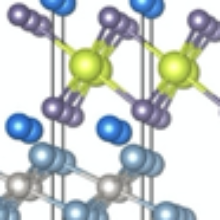A material with magnetic ions can host Kondo physics, a coupling between magnetic ion and conduction electron. The Kondo effect in metallic system causes resistivity minima and often followed by Kondo lattice where the coupled electrons screen the magnetic moment and form a flat band in a Fermi surface. In such a case, the effective mass of the conduction electrons gets heavier, thus it is called the heavy-fermion system.
In a geometrically frustrated system such as a triangular or Kagome lattice, the magnetic moment of ions could also be frustrated. In insulating state, the local electrons change their direction of magnetic moment to achieve ordered state. However, in metallic system, the itinerant nature of a conduction electron also alters the intensity but the direction of magnetic moment. Thus, in a heavy- fermion system, the Kondo effect may modulate the intensity of a magnetic moment depending on the direction. In this project, we will study a triangular antiferromagnetic metallic compound CePtAl4Ge2 via infrared spectroscopy. The exotic magnetic structure was reported manifesting a varying amplitude of magnetic moments possibly caused by alternating Kondo effect and Ruderman–Kittel–Kasuya–Yosida (RKKY) interaction to avoid the frustration. Using the linearly polarized infrared light, we are looking for an anisotropic optical response due to this nematic Kondo effect. This project will provide an understanding of infrared spectroscopy and deep insight of the heavy-fermion system. A successful candidate could extend her/his research to a master’s study on the heavy-fermions system.
Contact: Seulki Roh, Prof. Martin Dressel
Keywords: Infrared spectroscopy, Heavy-fermion system, Kondo effect, Nematic Phase, Geometrical frustration.
Contact

Seulki Roh
Dr.Infrared spectroscopy

Martin Dressel
Prof. Dr. rer. nat.Head of Institute



